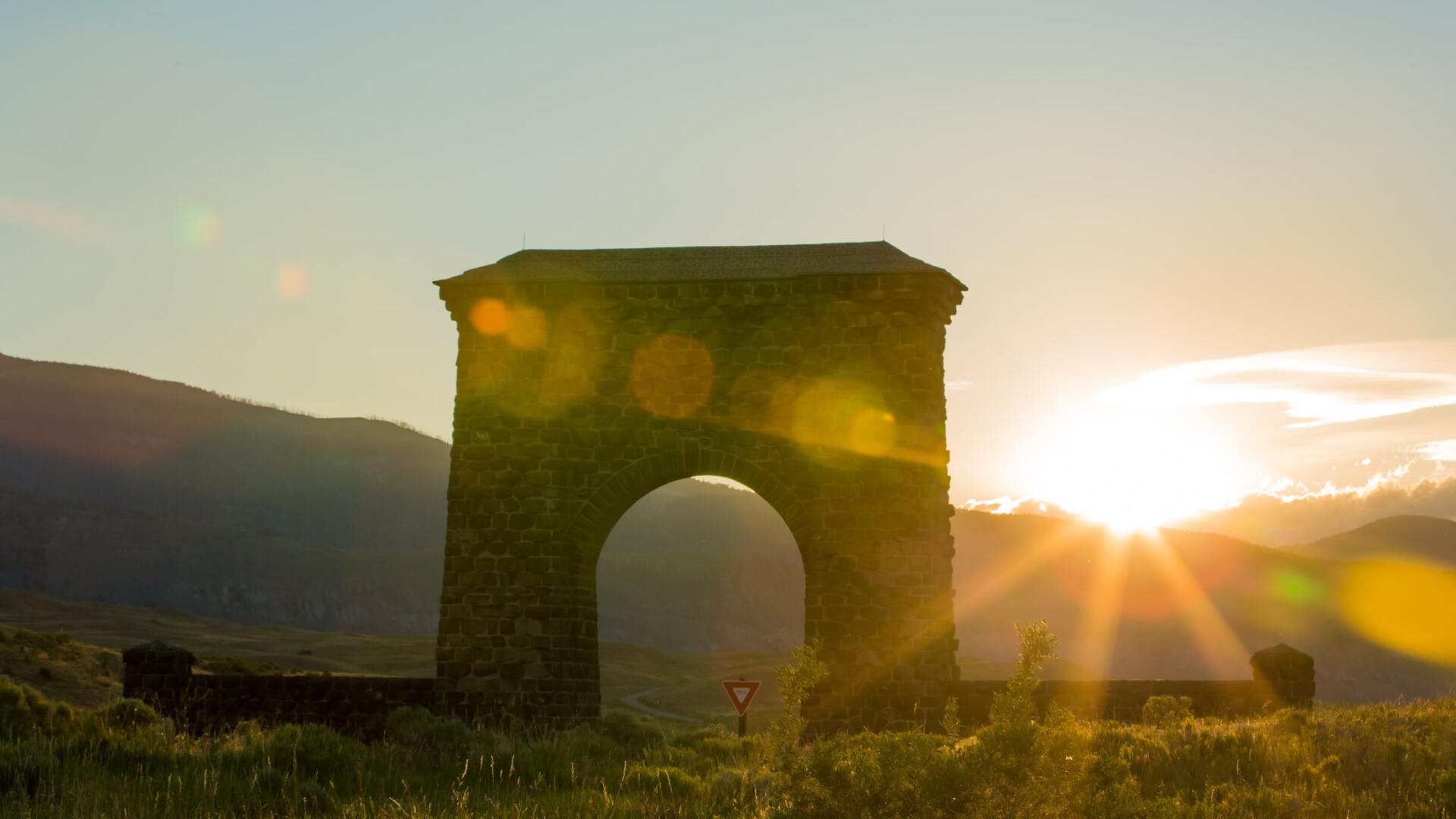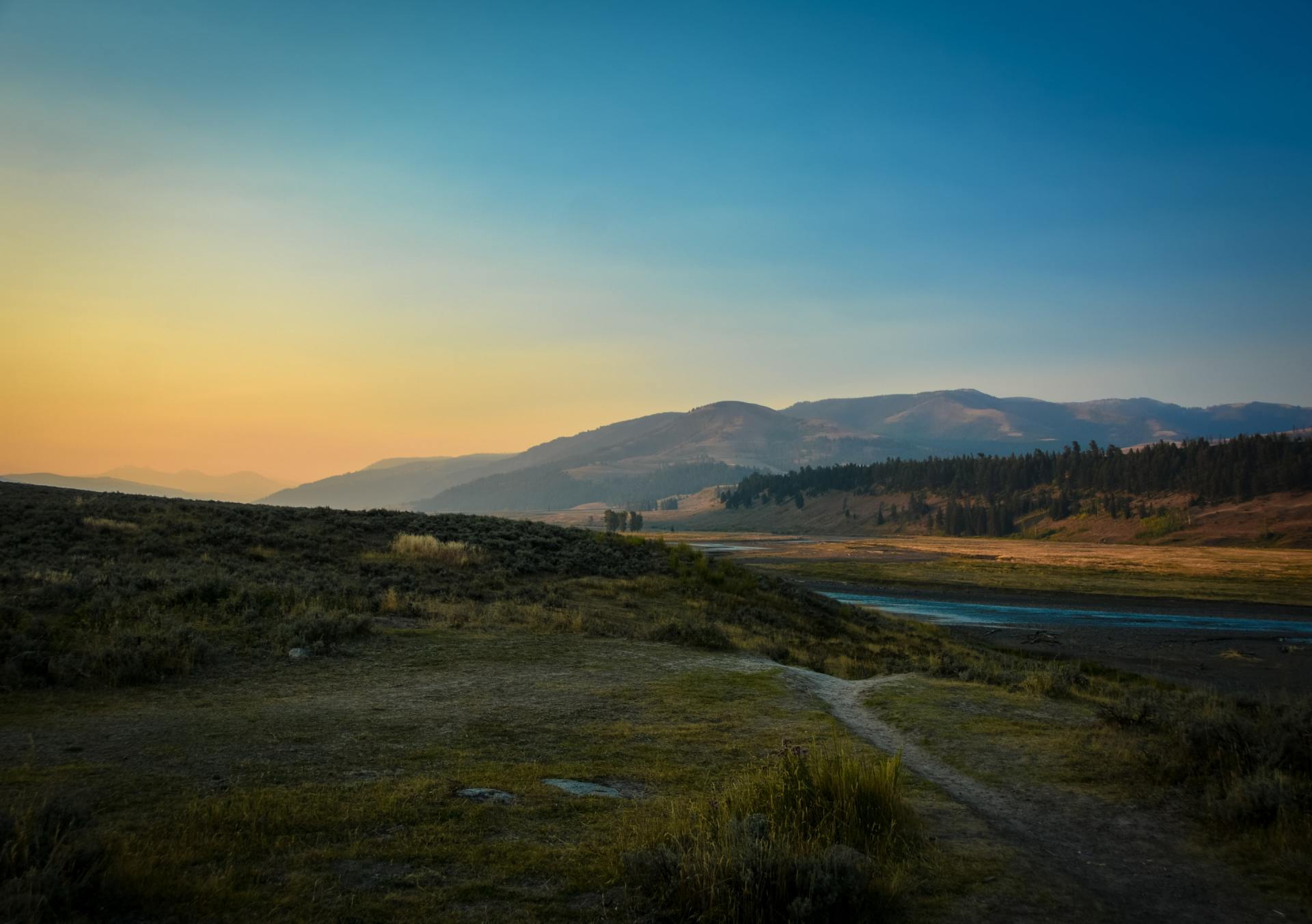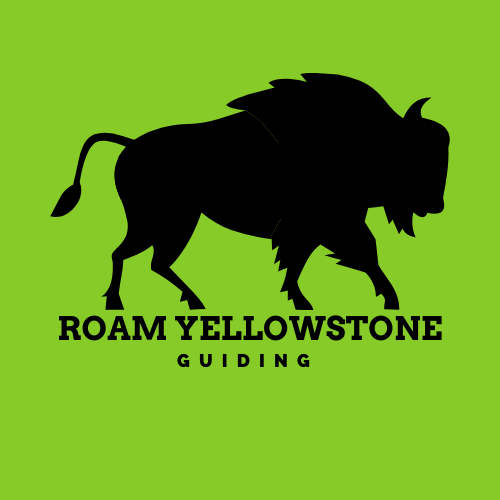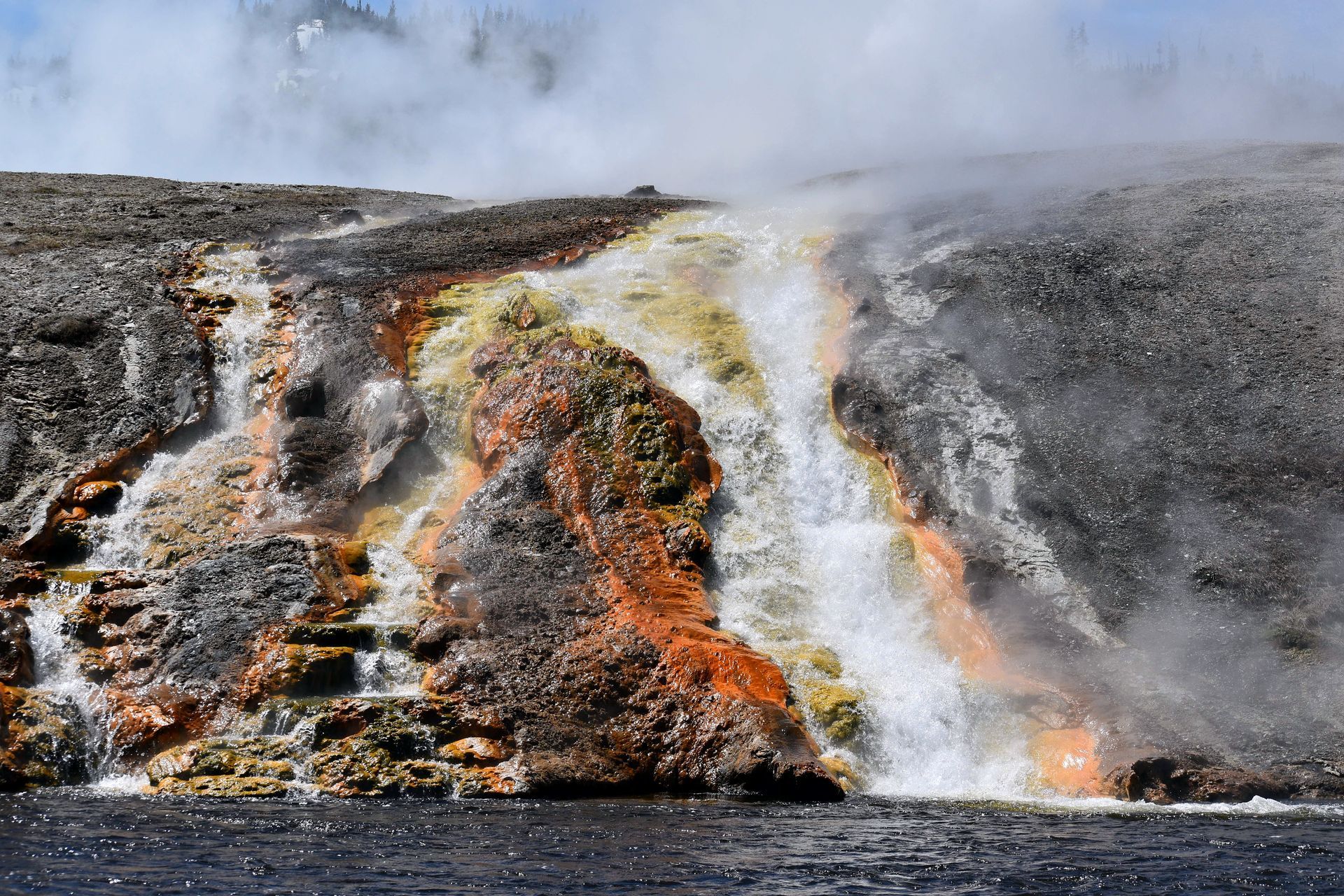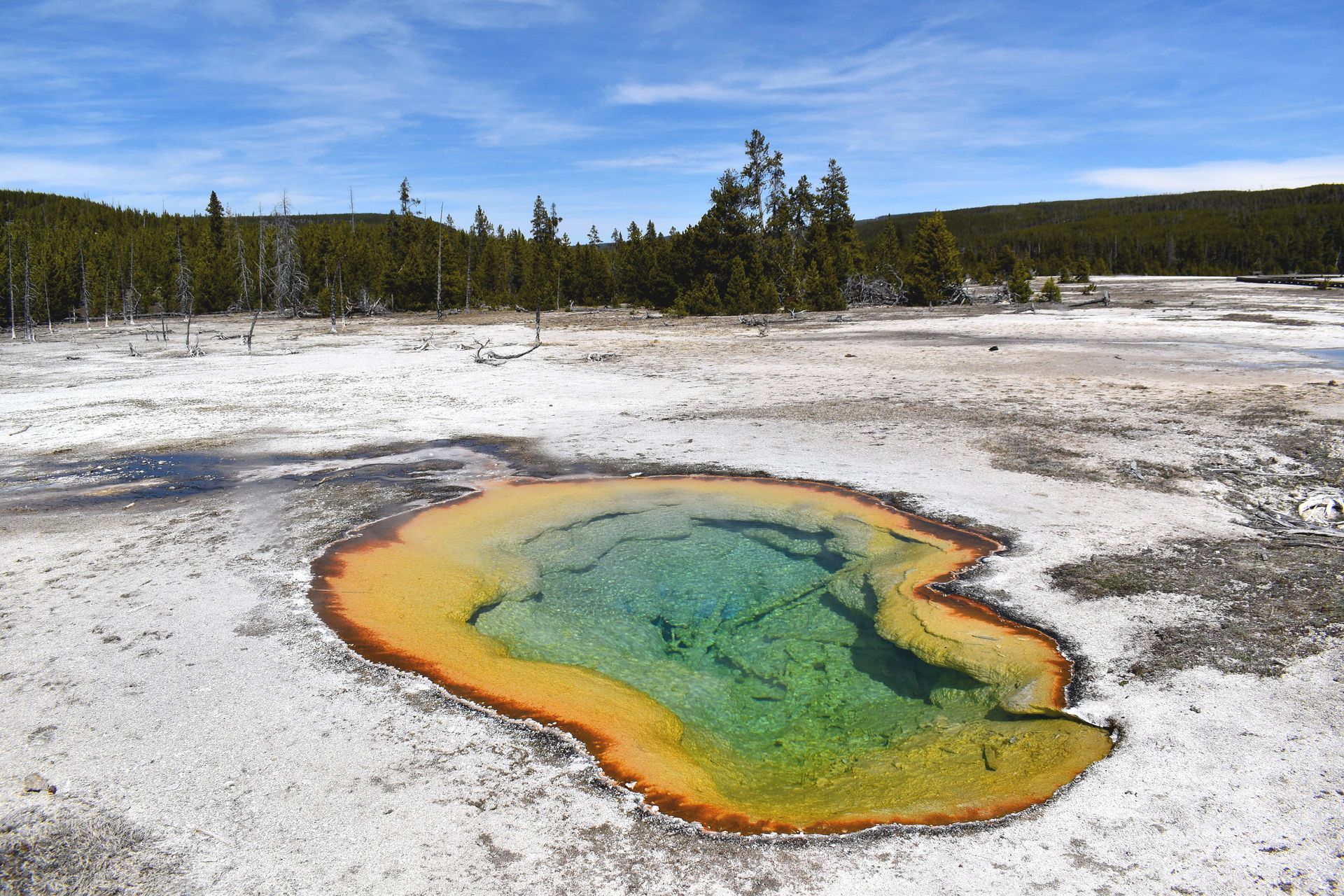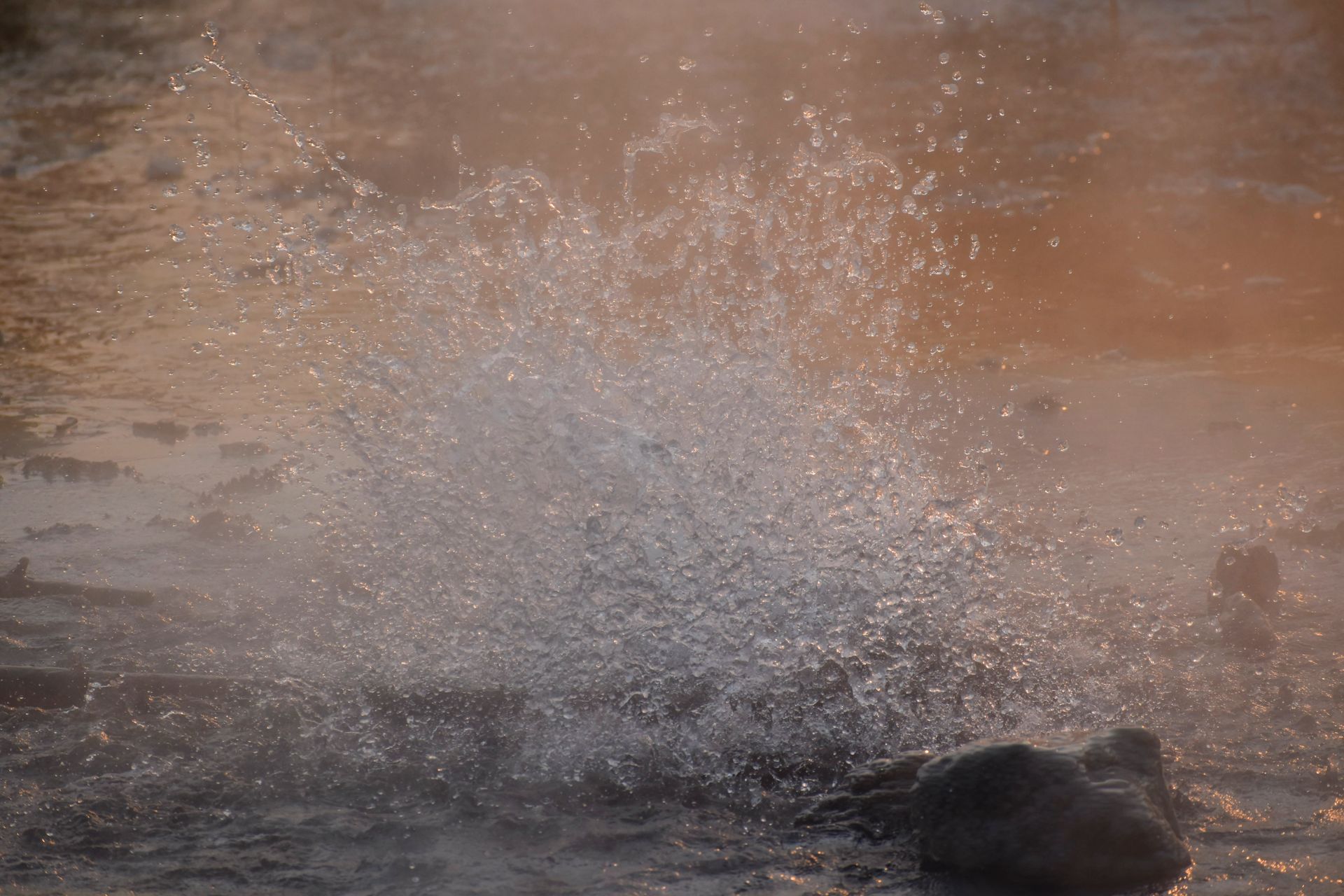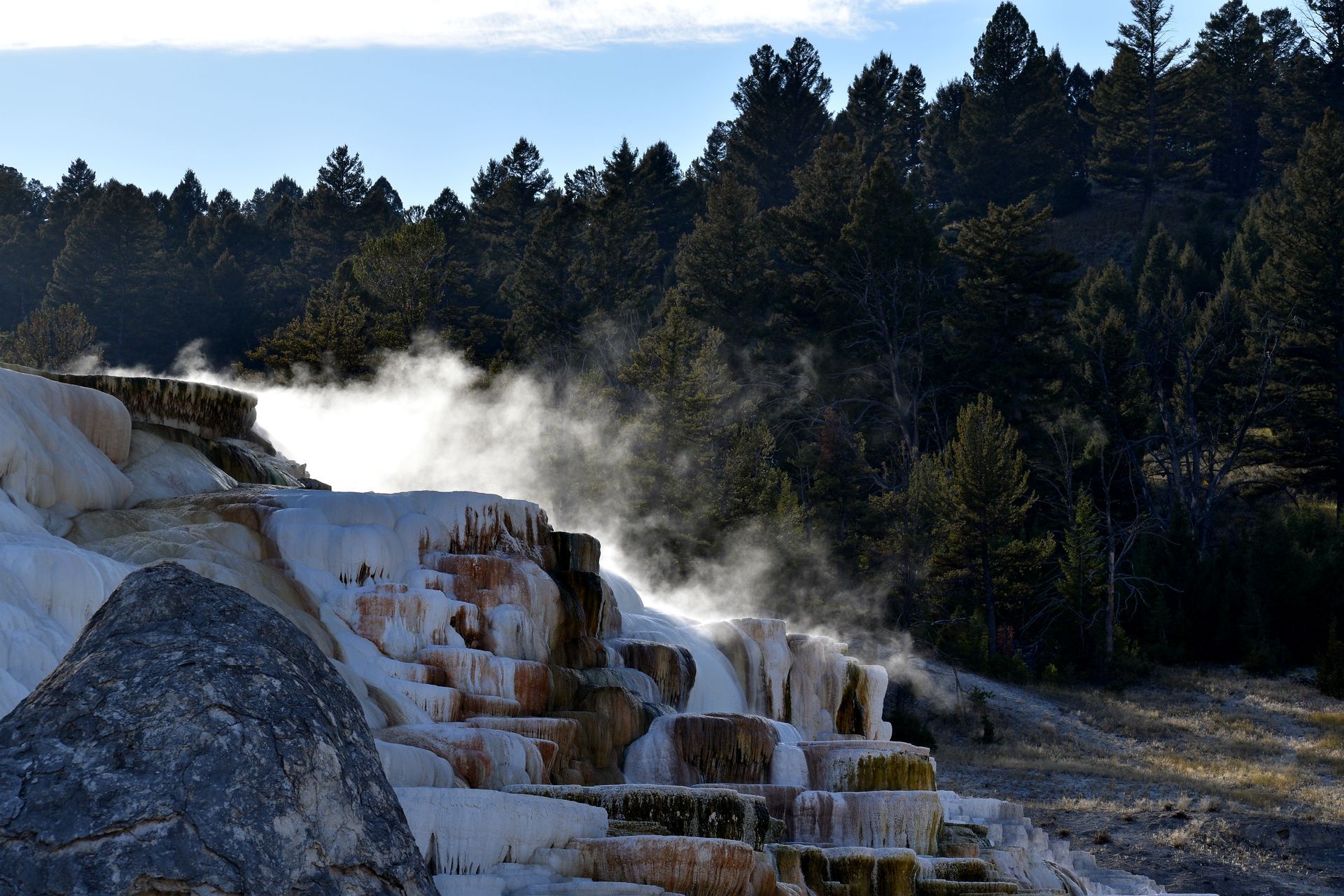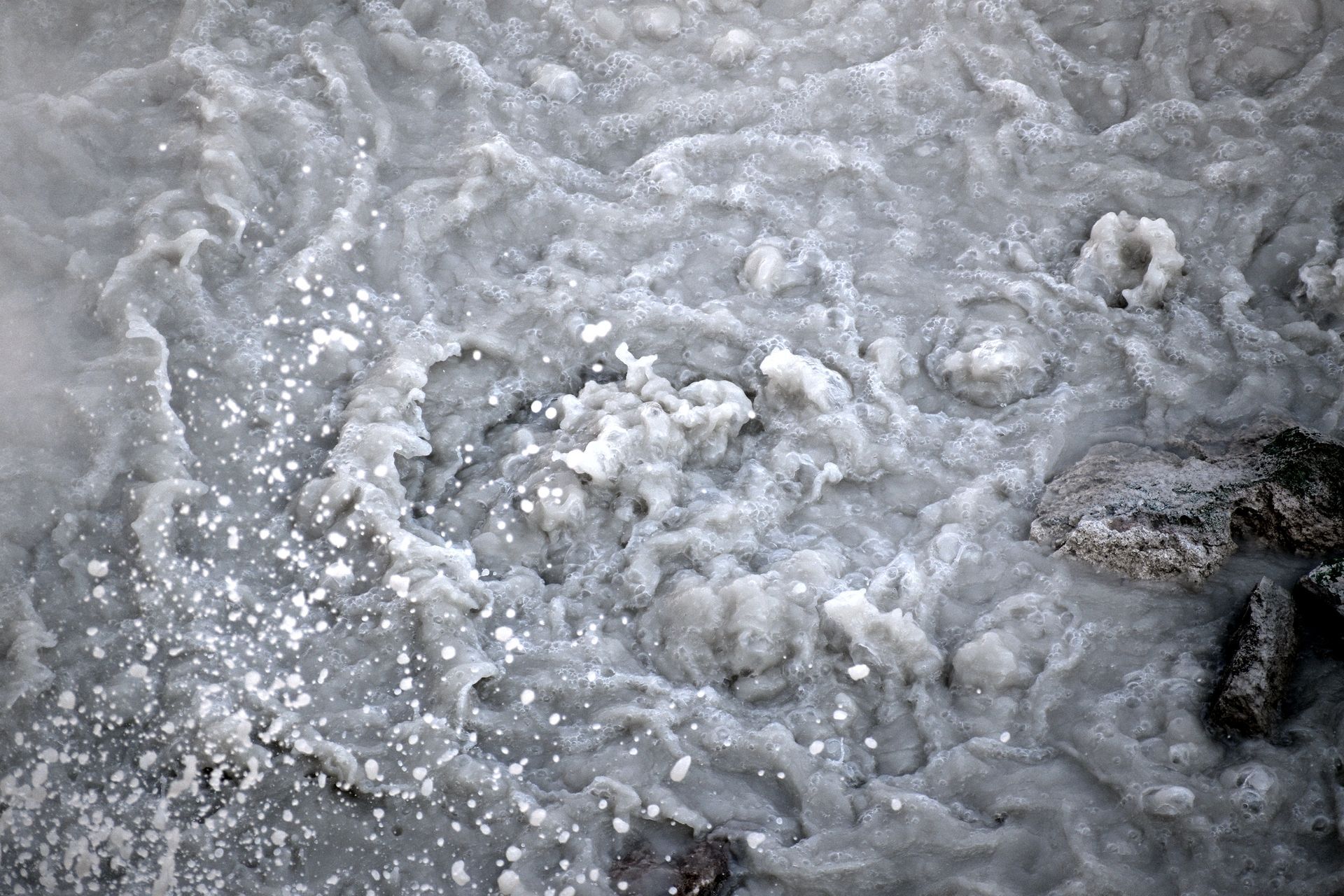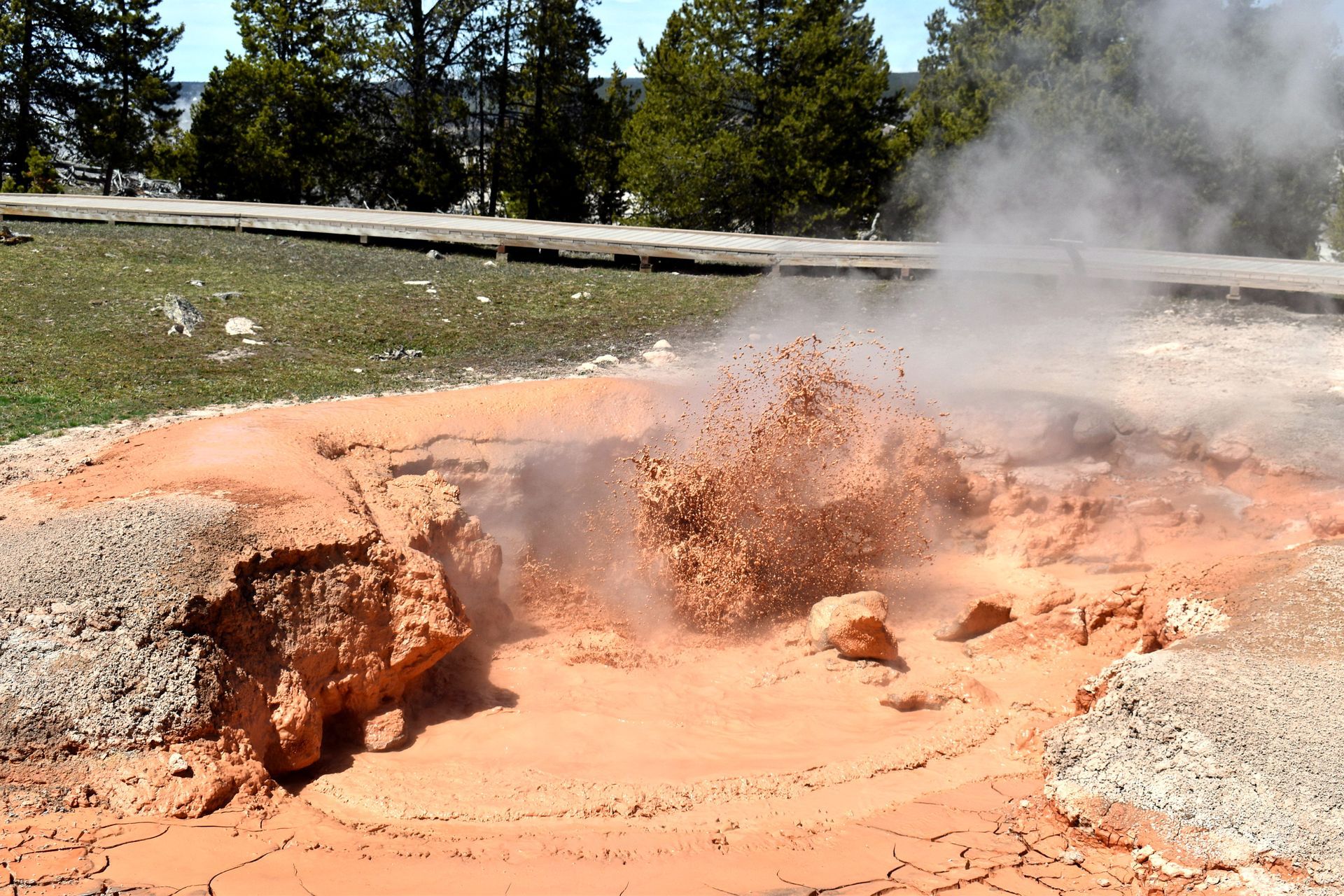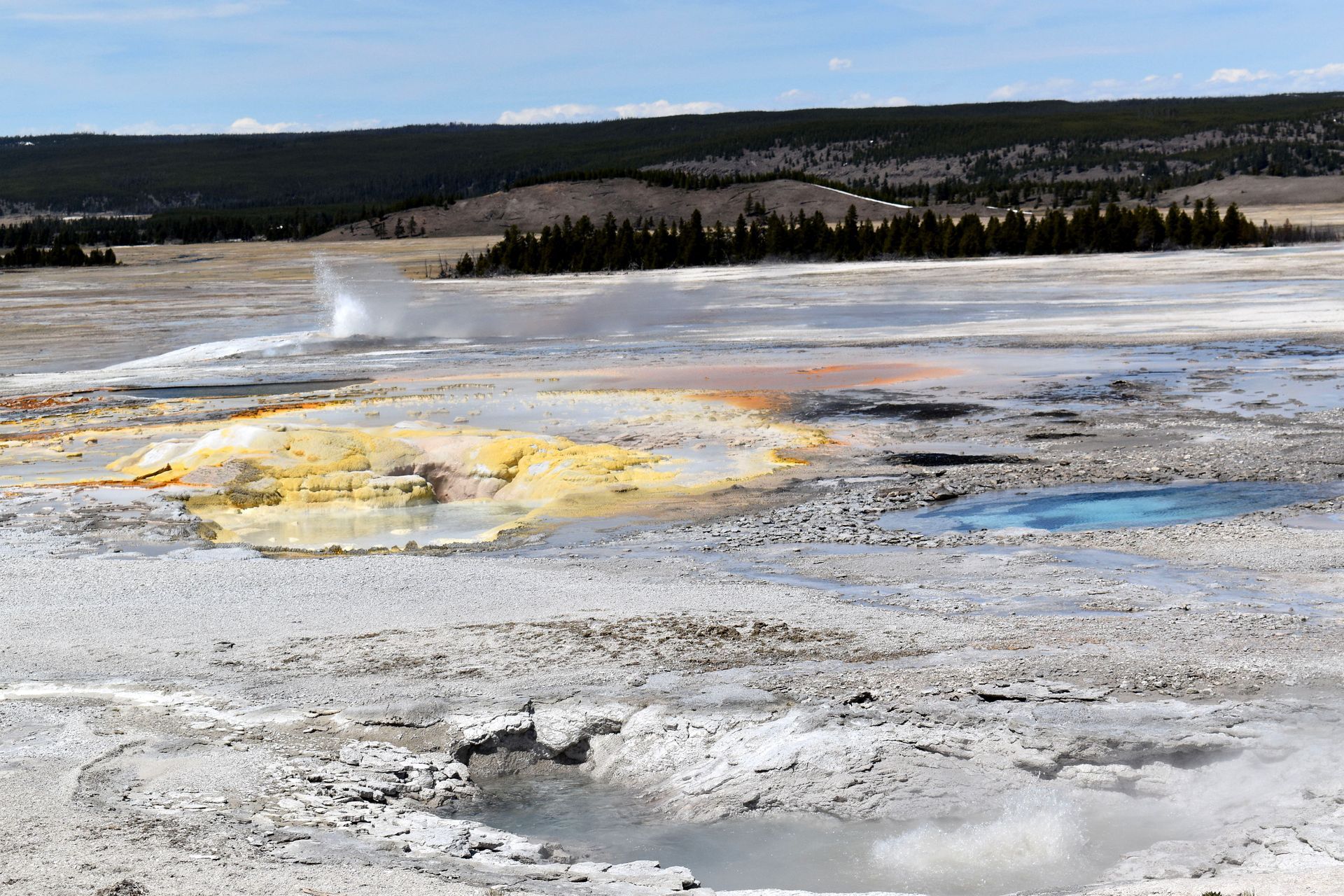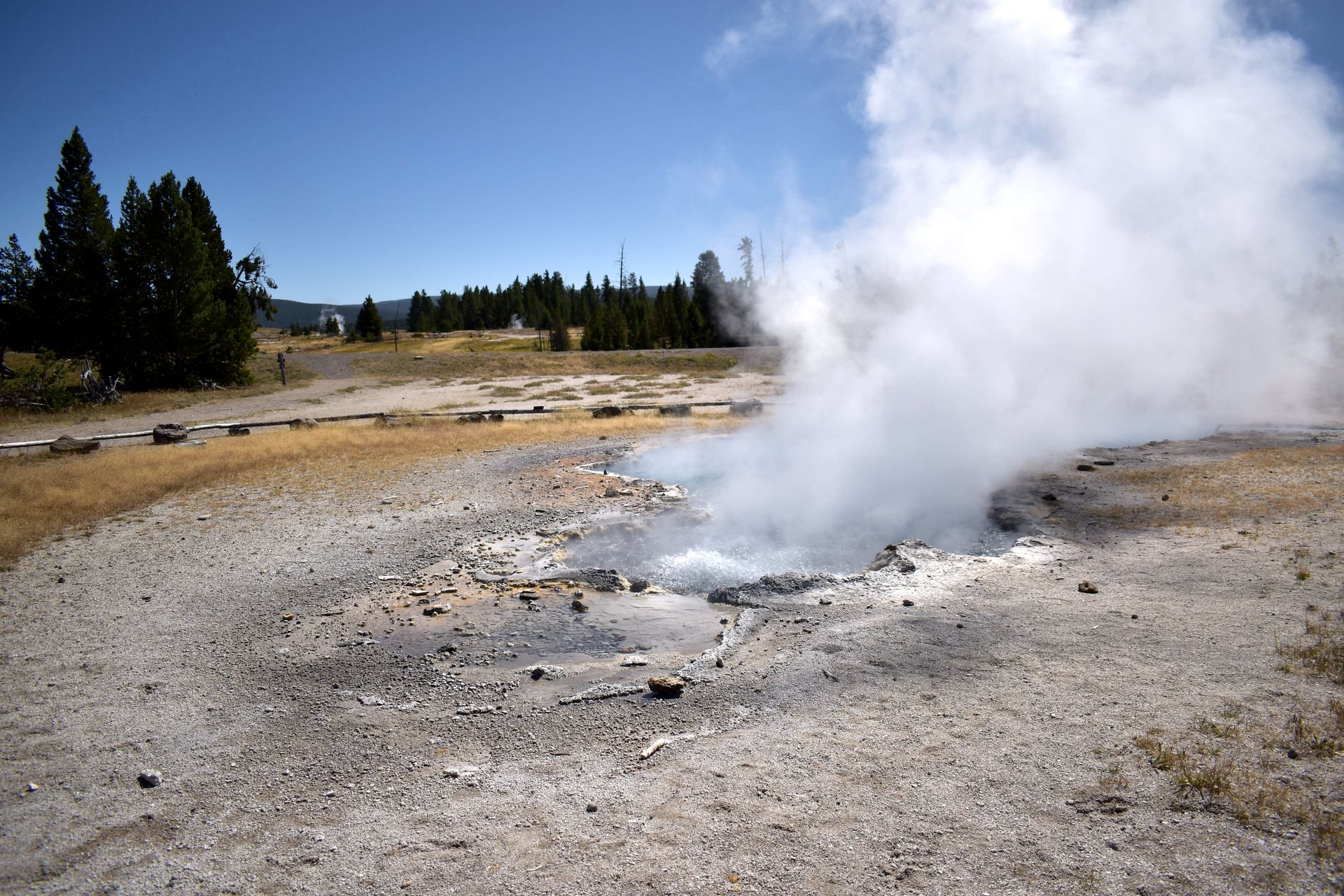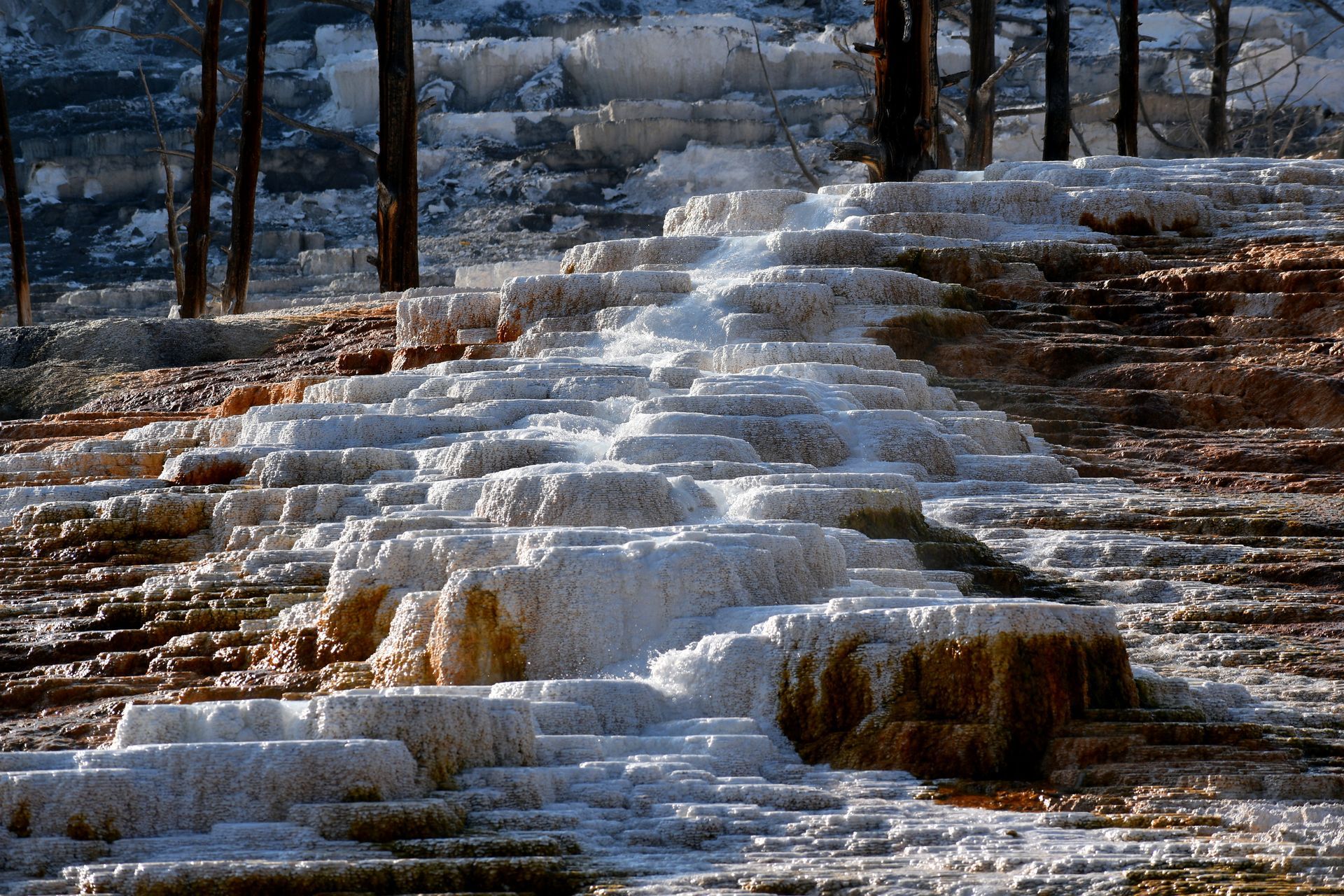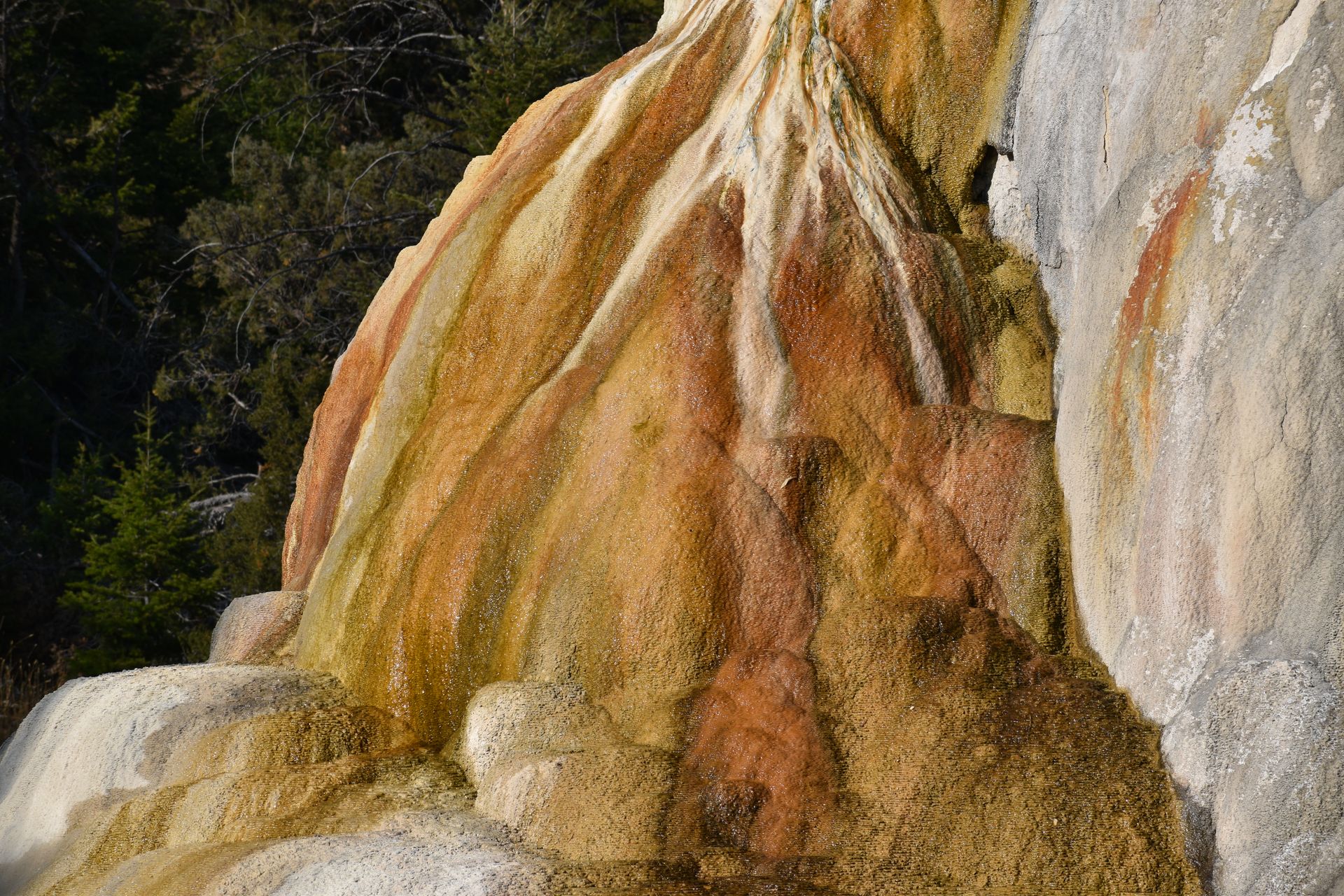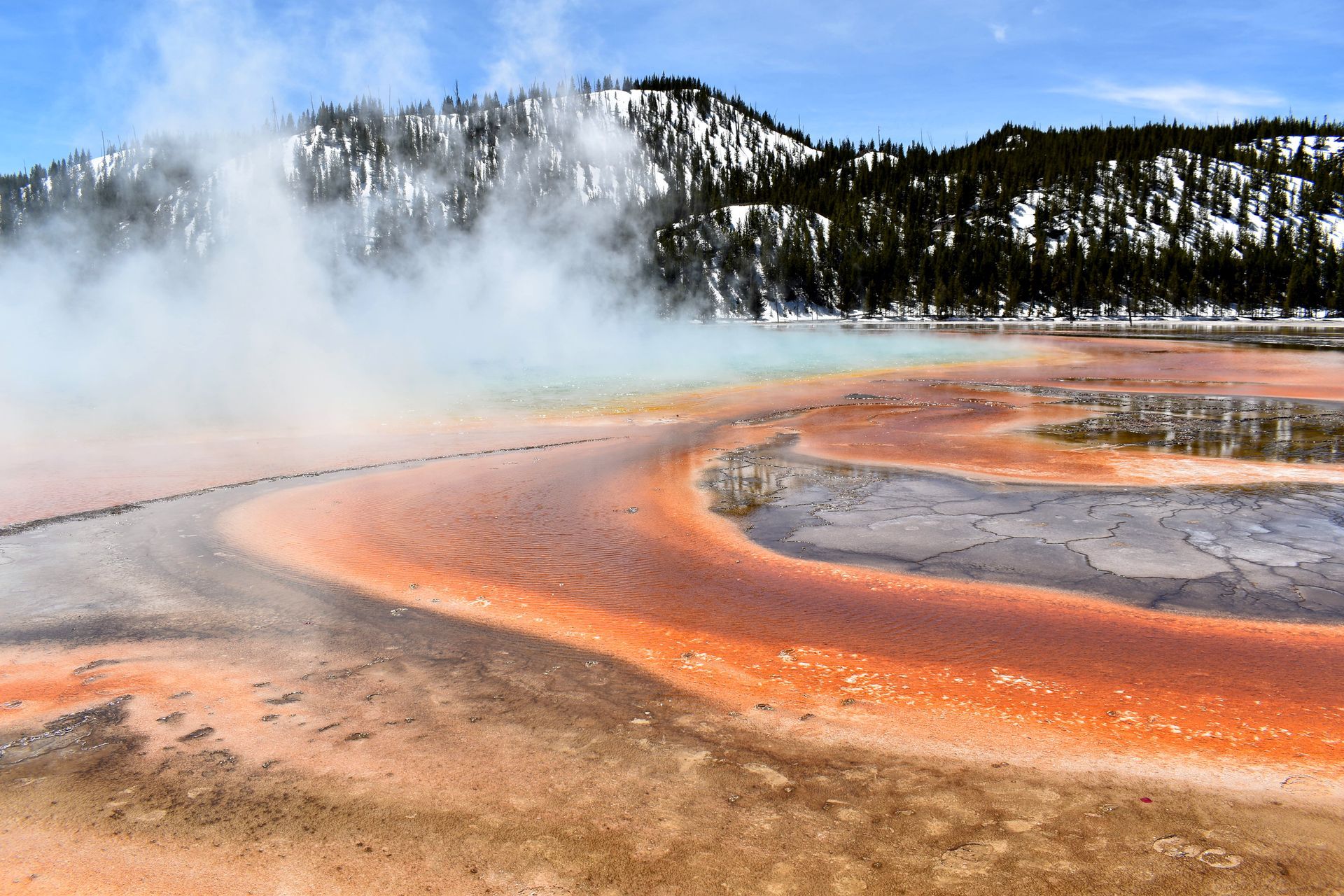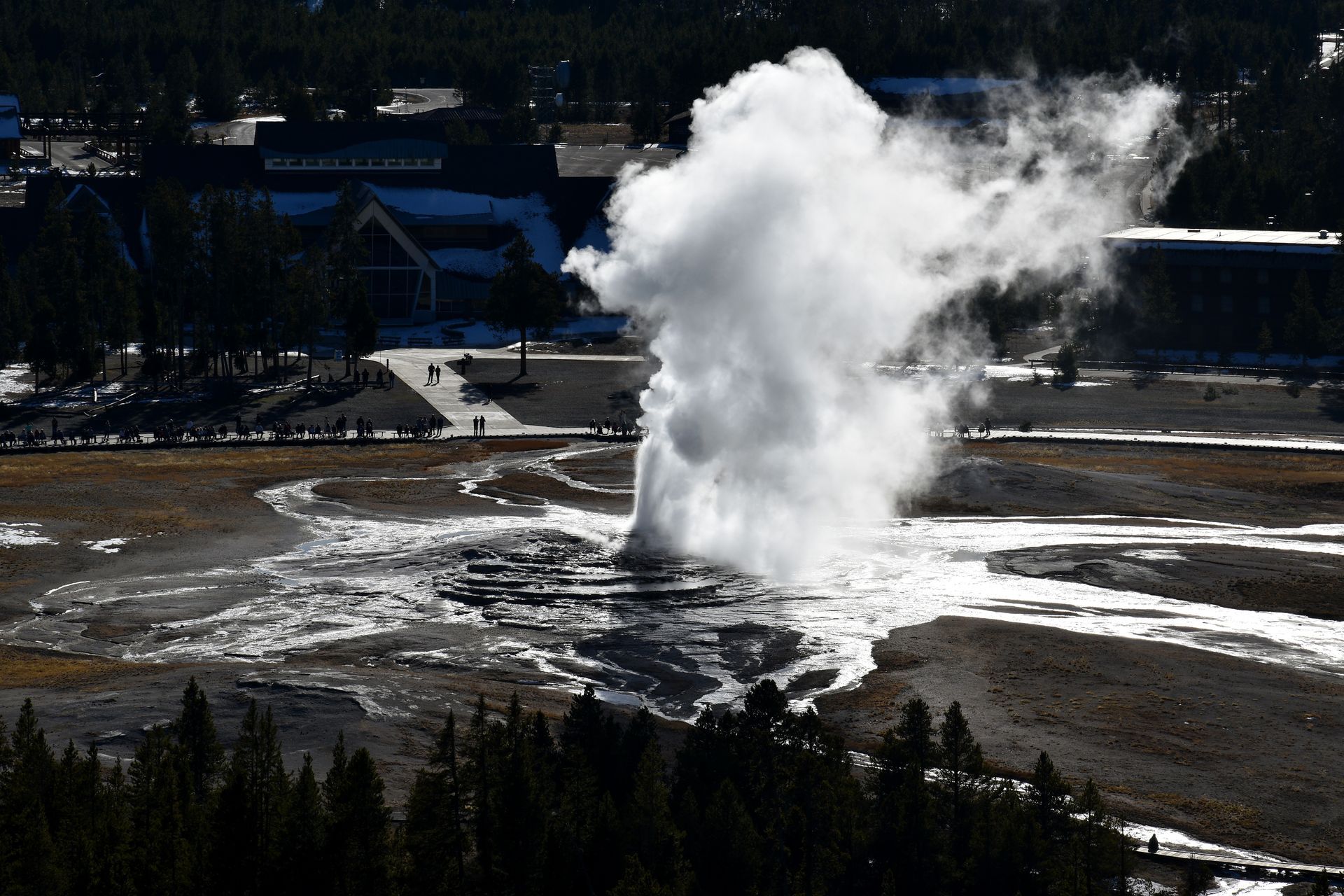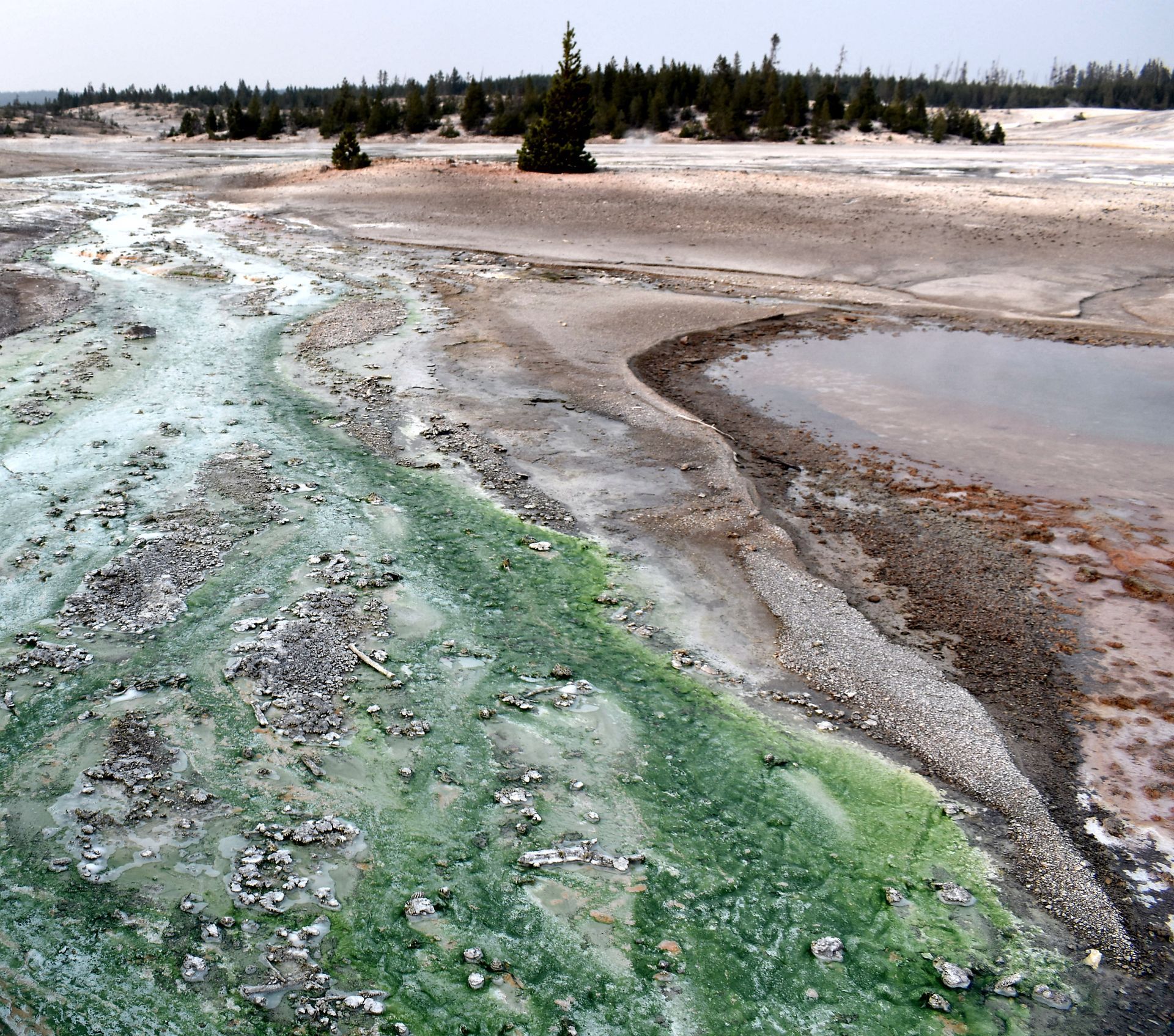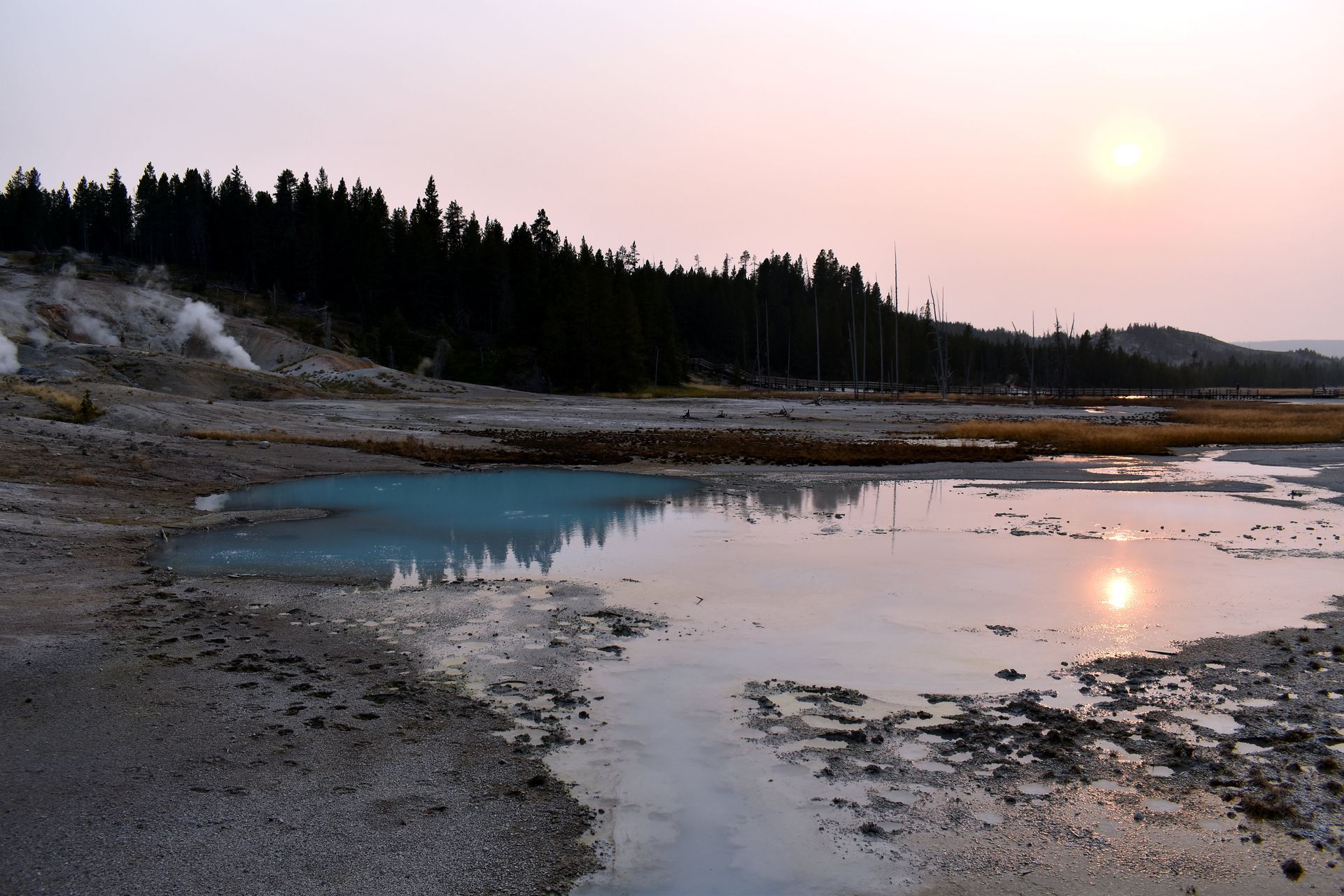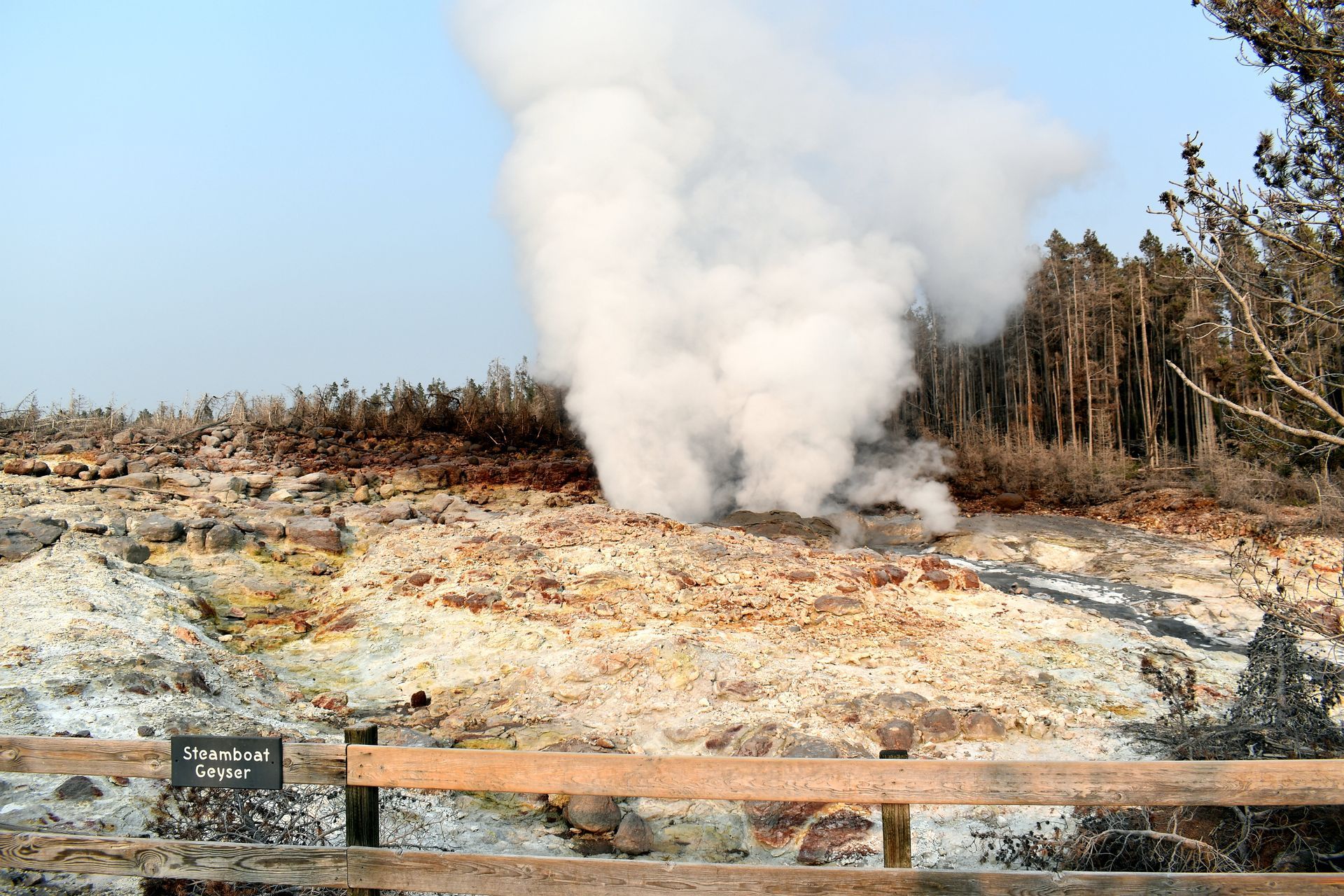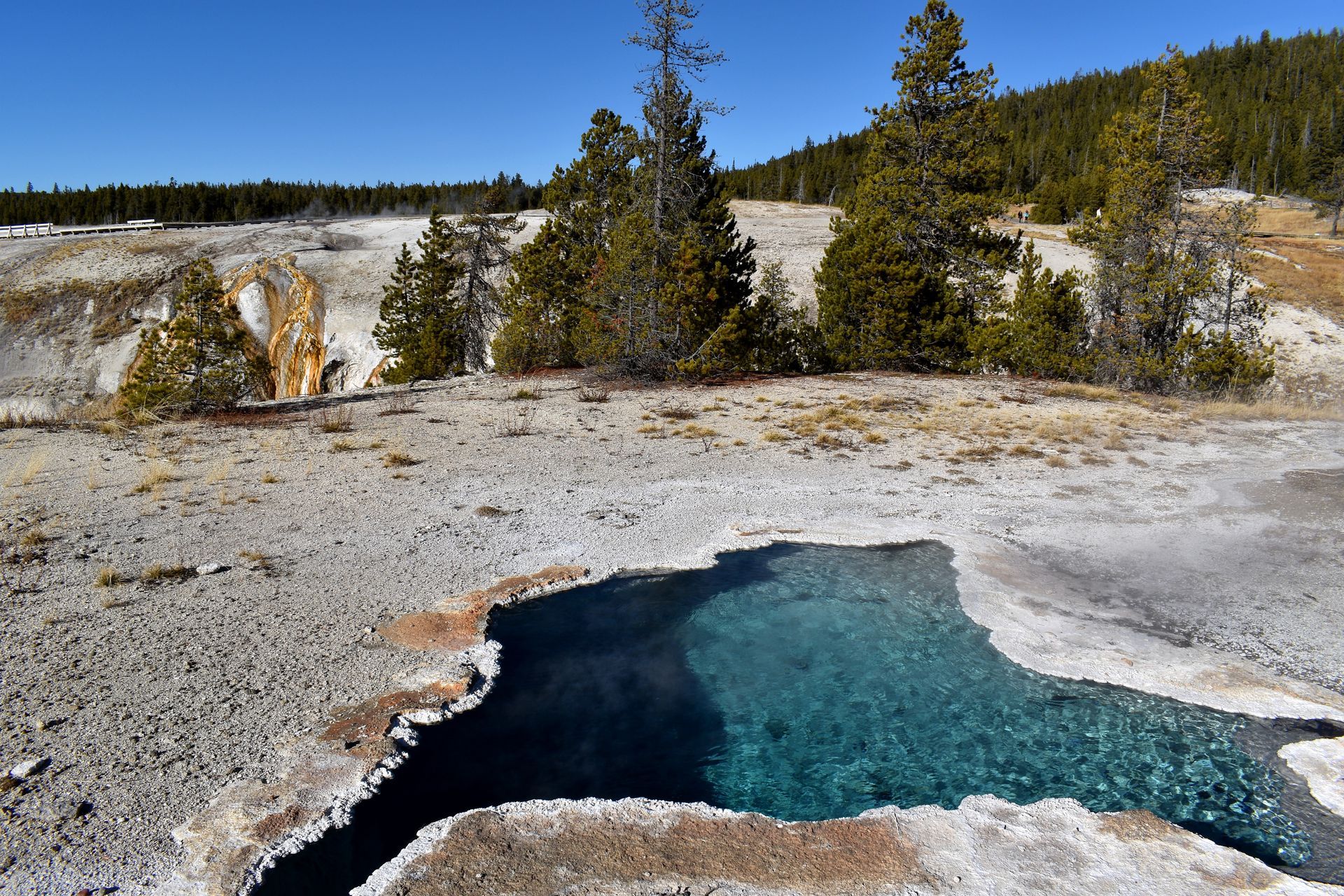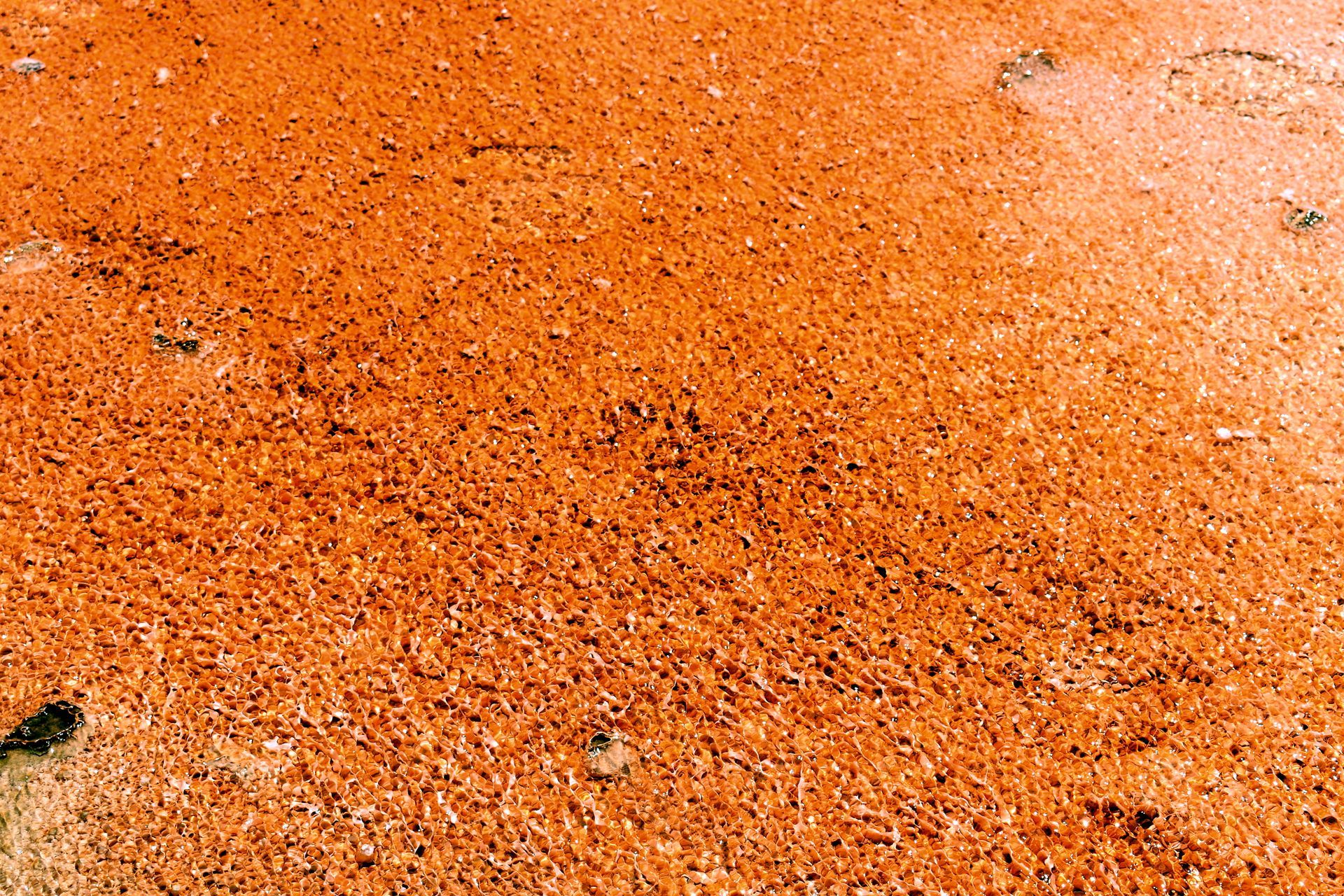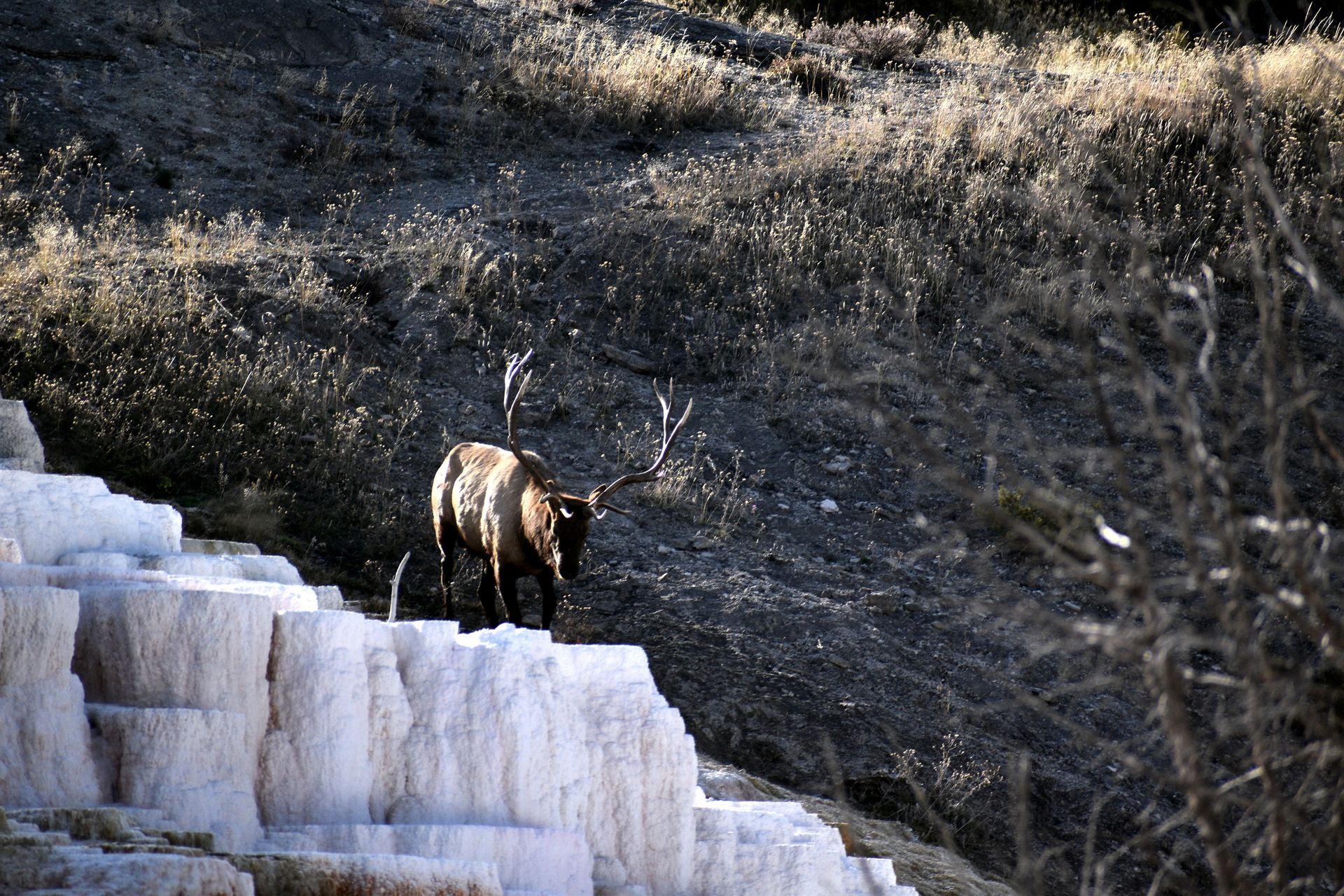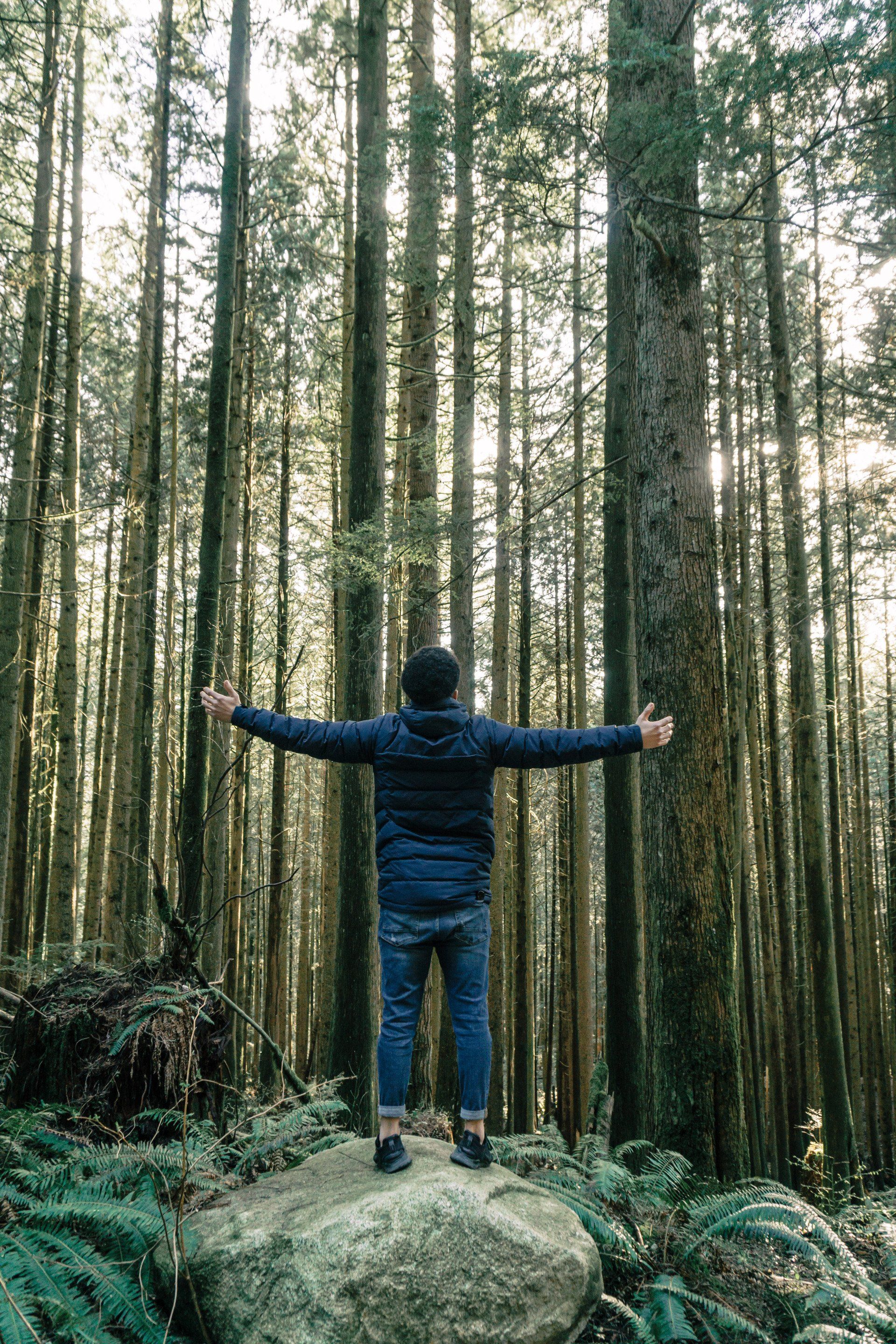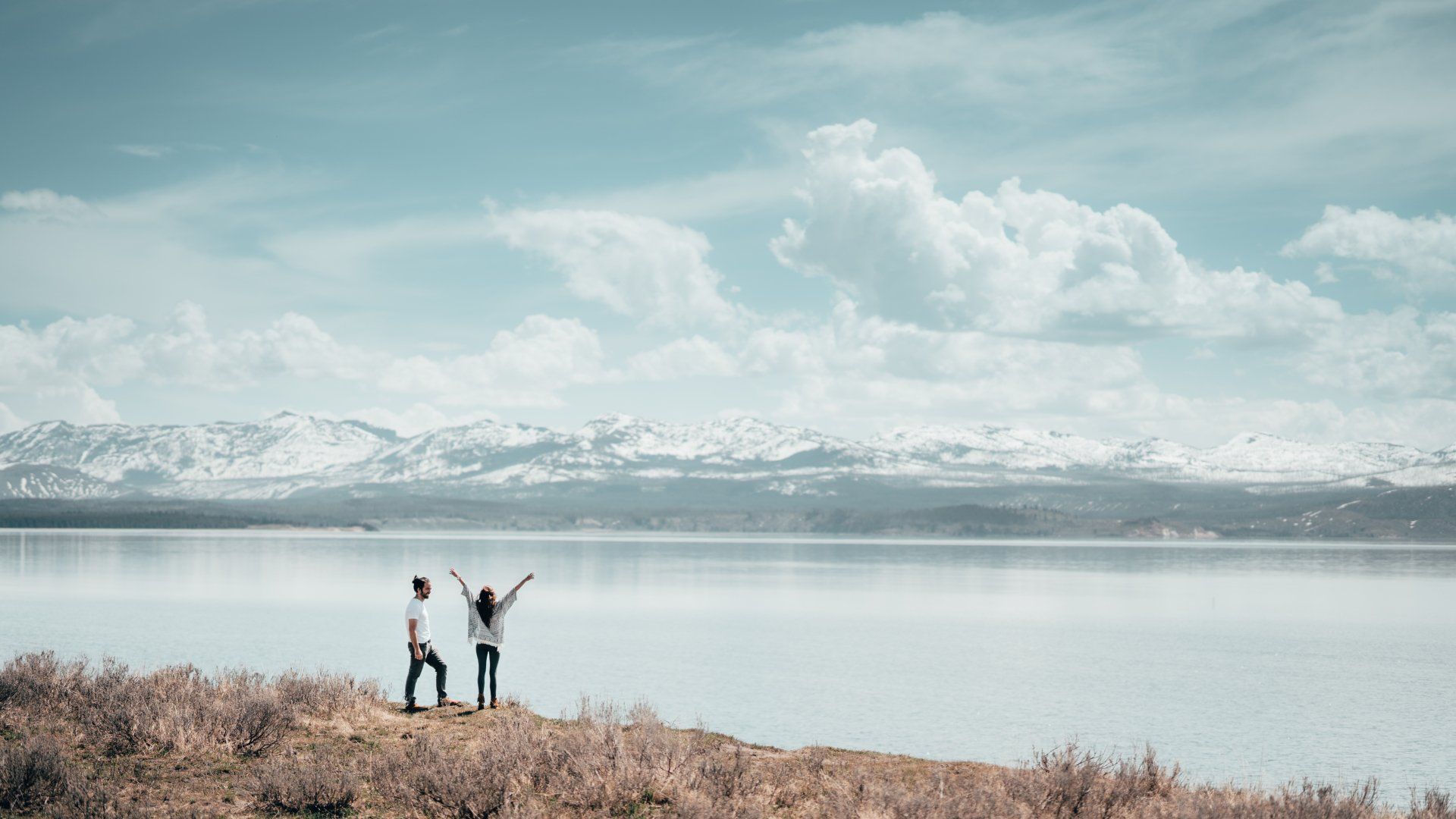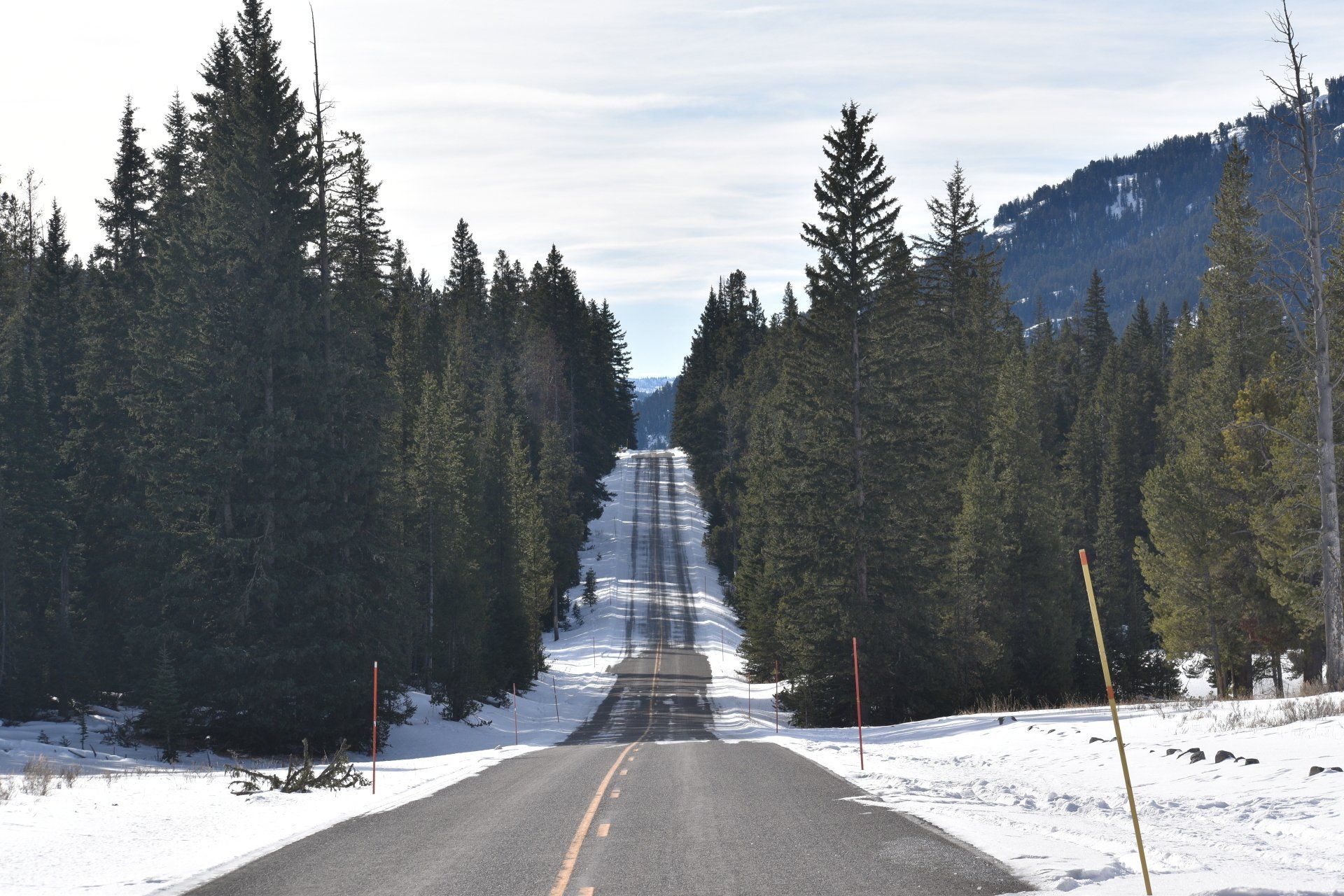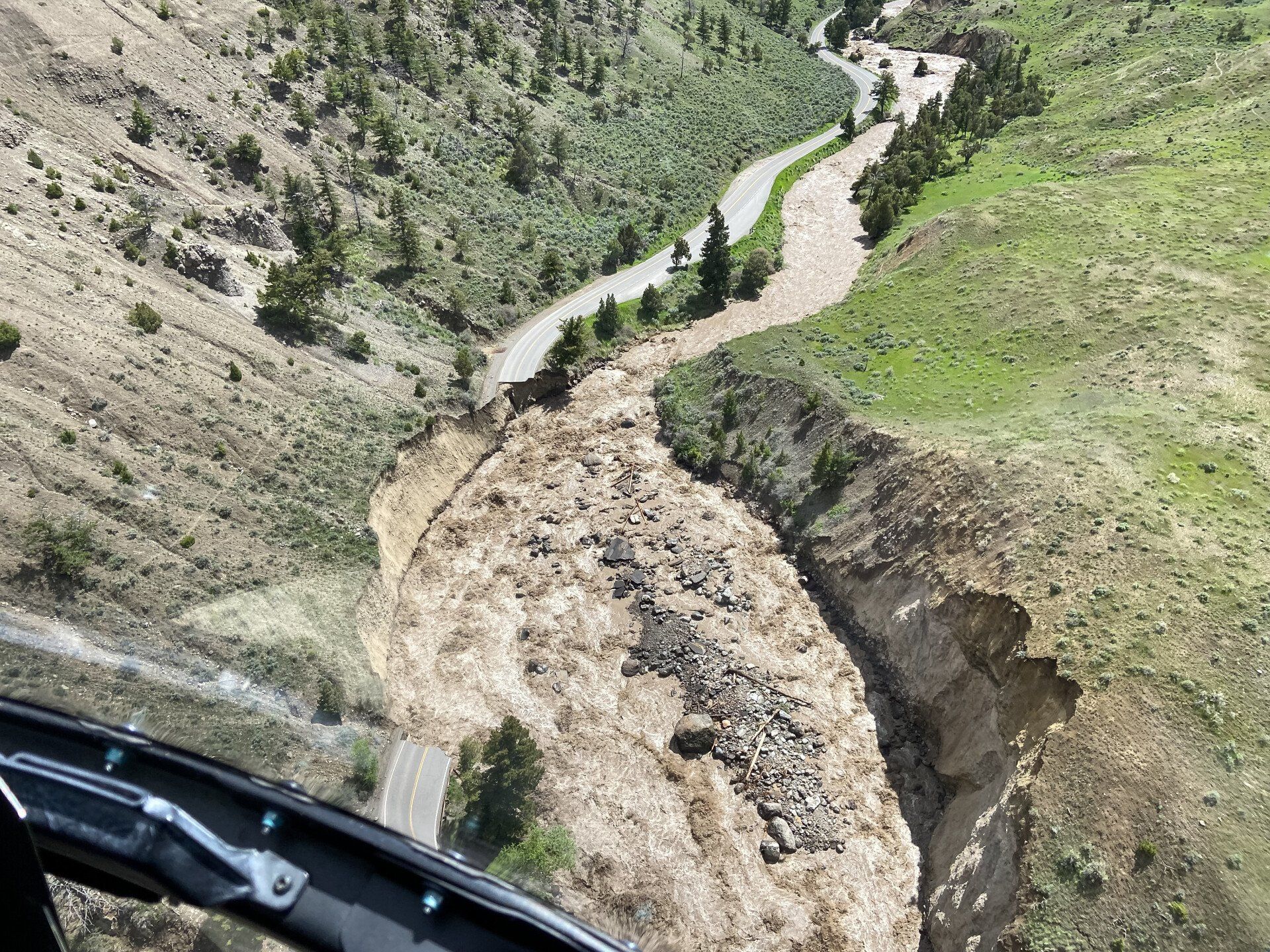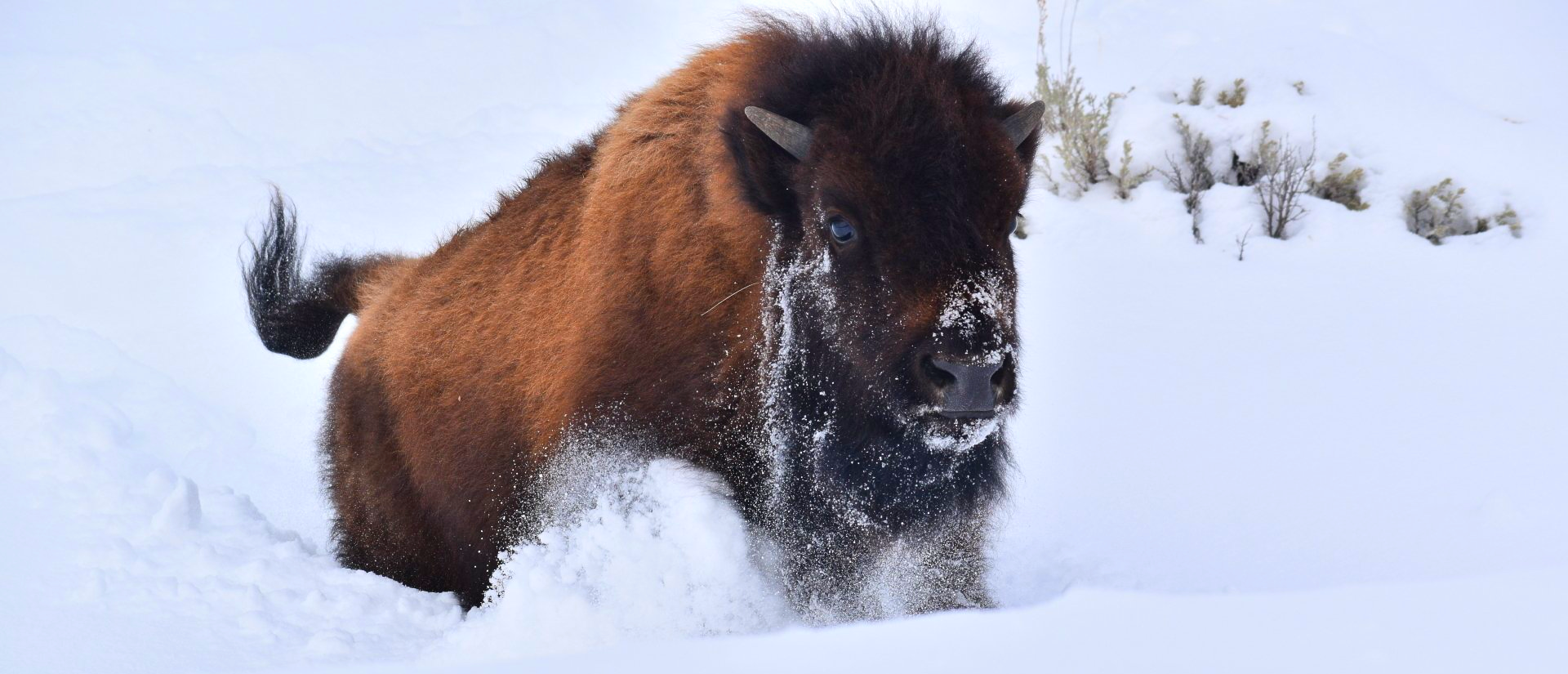Hydrothermal Activity In Yellowstone
A guide to hydrothermal features in Yellowstone
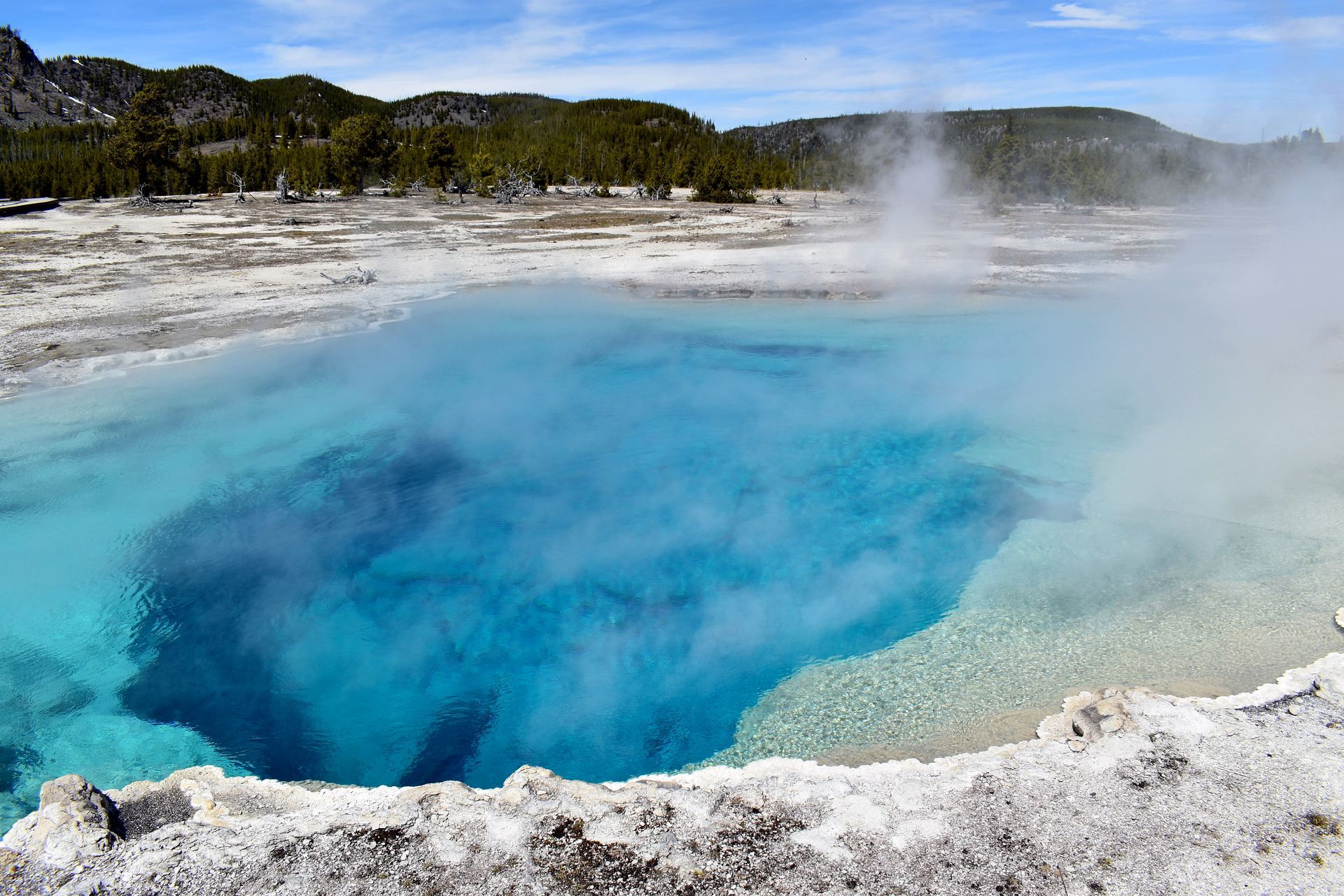
Yellowstone National Park is a geological wonderland with more than 10,000 hydrothermal features scattered throughout its 2.2 million acres of wilderness. The park is situated atop the Yellowstone Supervolcano Caldera, one of the world's largest volcanoes, and is home to four distinct types of hydrothermal features: geysers, hot springs, mud pots, and fumaroles.
Geysers are probably the most well-known of these features. They erupt with bursts of steam and water, sending plumes high into the air. Yellowstone is home to more than 500 geysers, which is more than half of all the geysers in the world. They are powered by underground chambers of superheated water that periodically erupt when the pressure builds up to a critical point. Some geysers such as Old Faithful are predictable while others are not. Current geyser activity from the park website can be found here: https://www.nps.gov/yell/planyourvisit/geyser-activity.htm and recent eruptions found here: https://geysertimes.org/
Yellowstone's geysers come in all shapes and sizes, with different eruption patterns and durations. Some of the most famous geysers in the park include Old Faithful, Beehive, and Steamboat. Old Faithful is the most predictable geyser in the park, erupting roughly every 90 minutes. On the other hand, Steamboat is the tallest geyser in the world, capable of erupting more than 300 feet high.
Hot springs are another type of hydrothermal feature found in Yellowstone. They are essentially pools of hot water that bubble up from below the earth's surface. The water in hot springs can reach temperatures of up to 199°F (93°C) and can be highly acidic or alkaline. These features are known for their vibrant colors, which are caused by thermophilic bacteria that thrive in the hot water.
Yellowstone is home to more than 10,000 hot springs, including the largest hot spring in the park - the Grand Prismatic Spring. This massive spring spans more than 370 feet in diameter and is renowned for its brilliant colors, which range from deep blues to vibrant oranges and yellows.
Mud pots are another type of hydrothermal feature in Yellowstone, and they are named for their bubbling, muddy consistency. They form when acidic water dissolves surrounding rock and mixes with sediment. The result is a thick, muddy pool that bubbles and belches with mud and gas.
Fumaroles are the last type of hydrothermal feature in the park. They are essentially steam vents that release gases like carbon dioxide, sulfur dioxide, and hydrogen sulfide. Fumaroles are often found near hot springs and geysers, and they are typically the hottest hydrothermal feature in the park.
The Upper Geyser Basin, located along the Firehole River, is home to some of the park's most impressive geysers, including Grand, Daisy, and Castle geysers. This area features a variety of hydrothermal features, including hot springs, geysers, and fumaroles. The geysers in this area are cone geysers, which erupt with a steady stream of water and steam. The most famous of these geysers is Old Faithful, which erupts every 90 minutes (+/-15 minutes)
The Middle Geyser Basin, located near the Madison River, features a variety of hydrothermal features, including colorful hot springs and small geysers. One of the most famous features in this area is the Grand Prismatic Springs, a vibrant blue hot spring with a rim of green, yellow and orange bacteria and algae around the edge. This area is also home to the Excelsior Geyser, which was once the largest geyser in the world, but is now a boiling hot spring that releases over 4,000 gallons of water per minute into the Firehole River.
The Lower Geyser Basin is the largest of Yellowstone's geyser basins and is home to the popular Fountain Paint Pots. These mud pots resemble a hot mess and bubble and boil as they release steam and gas. The most famous feature in this area is the Fountain Geyser, which erupts to heights of up to 75 feet, but is considered unpredictable.
The West Thumb Geyser Basin is located on the edge of Yellowstone Lake and features a unique collection of geysers, hot springs, and fumaroles. One of the most striking features in this area is the Black Pool, which is a deep blue-green color and is surrounded by a white crust of silica. This area is also home to the Fishing Cone, a geyser that was once used by early visitors to the park to cook fish. They would catch a fish in the lake and then drop it into the geyser, which would cook it in seconds.
The Mud Volcano Area is located in the Hayden Valley and features bubbling mud pots, steam vents, and fumaroles. The most famous feature in this area is the Dragon's Mouth Spring, which constantly emits steam and makes loud, growling noises. This area is also home to the Mud Volcano, which was once much more active than it is today. In fact, in the early days of the park, visitors used to cook eggs in the mud pots here.
The Norris Geyser Basin is one of the hottest and most dynamic areas of the park, with a wide variety of hydrothermal features including geysers, hot springs, fumaroles, and mud pots. The geysers here tend to be more unpredictable and irregular than those in the Upper Geyser Basin, but the area is still a must-see for visitors to the park. One notable feature of the Norris Geyser Basin is Steamboat Geyser, which is the world's tallest active geyser, capable of erupting to heights of over 300 feet.
Finally, the Mammoth Hot Springs area is known for its unique terraces made of travertine, a type of limestone that forms when hot water containing calcium carbonate rises to the surface and evaporates. Over time, the buildup of travertine creates colorful, terraced formations that are a favorite among photographers and nature enthusiasts alike.
It's important to note that while these areas are some of the most popular in the park, Yellowstone is home to thousands of hydrothermal features spread out across its 2.2 million acres. Exploring lesser-known areas can be just as rewarding and may even offer the chance to discover something new.
Disclaimer: While this guide provides an in-depth introductory to some of Yellowstone's most popular hydrothermal areas, it is by no means comprehensive. Yellowstone is home to thousands of hydrothermal features, and visitors are encouraged to explore lesser-known areas and discover new wonders for themselves. Additionally, it's important to always follow park regulations and stay on designated trails to protect both yourself and the delicate ecosystem of the park.
Yellowstone's hydrothermal features are not only beautiful, but they also play a crucial role in the park's ecosystem. Many animals, like bison, elk, and bears, are known to frequent the hydrothermal areas to warm themselves during the colder months. In addition, the thermophilic bacteria that live in the hot springs and geysers provide a vital food source for a variety of microorganisms and insects.
If you're interested in exploring Yellowstone's hydrothermal areas, there's no better way to do so than with Roam Yellowstone Guiding. Your expert guide will take you on a tour of the park's most stunning hydrothermal features, providing you with fascinating insights into their geology and biology. Whether you're interested in geysers, hot springs, or mud pots, we've got a tour that's perfect for you.
In conclusion, Yellowstone's hydrothermal areas are a geological wonder and a testament to the power of nature. With their stunning colors, towering geysers, and bubbling mud pots, they offer a glimpse into a world that few get to see. So why not book a tour with Roam Yellowstone Guiding today and experience the magic of Yellowstone's hydrothermal features for yourself?
Get In Touch
